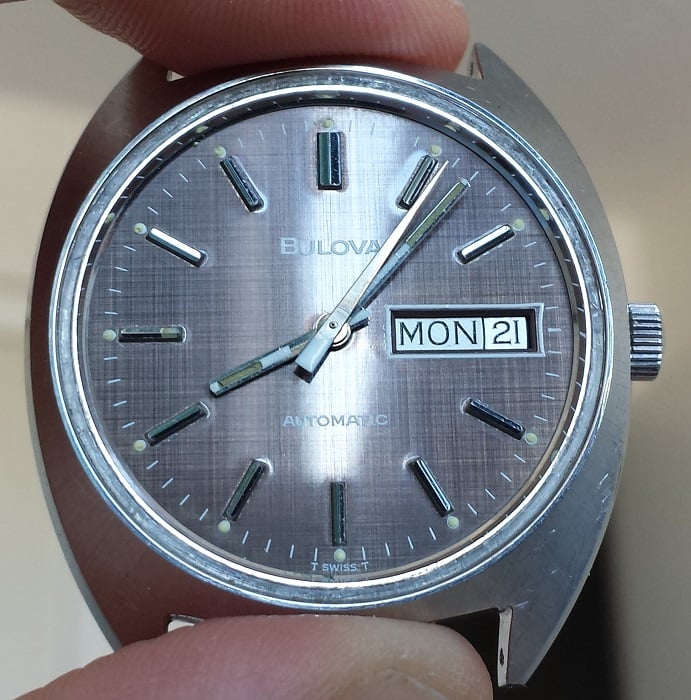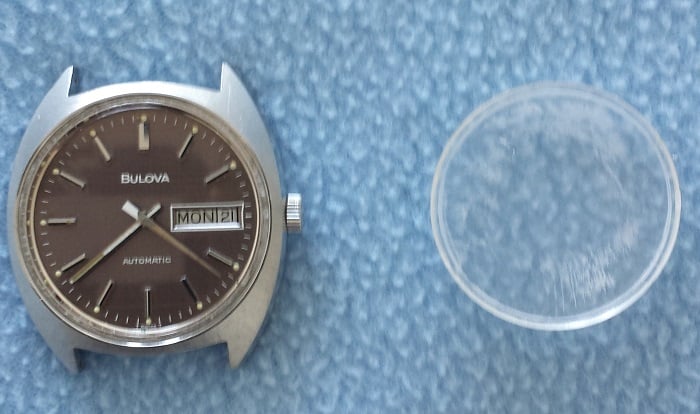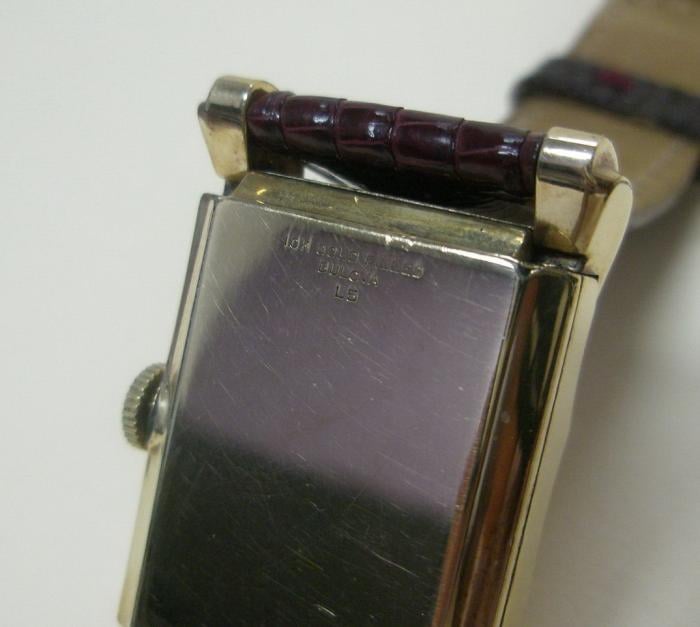If you have a question about how to fix your watch, post a questions here and just maybe one of our experienced members may have the answer for you.
Can any of the experiences watch repairman help eplain why my vintage 1922 Bulova ladies does this. I've stripped , cleaned and re-assembled...but what did I do wrong? Beat is nice and strong and will run for a full wind. I just can't seem to get the timing right. Just when I think its tuned at one angle, it's way out on another.
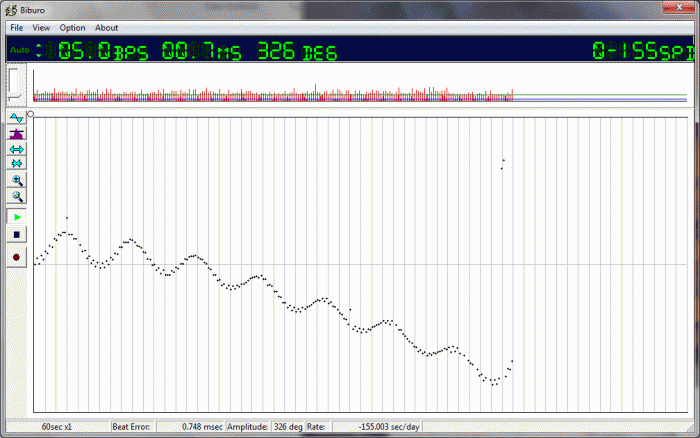
I understand that the general downwards slope means its running slow....but why does it have the bumps? Other watches I've tested have straight tracks.
Appreciate any advice.
That is a bent pivot, or your escape wheel is not perfectly round. Also, that is a fairly high amplitude for an old watch, but it's possible that the program does not take into consideration lift angle, or has it set at a constant value.
To get an acceptable delta when timing in positions, all disturbances must be addressed: Endshake of all the arbors, in some cases sideshake will have been affected over the years by corrosion or wearing away of the pivot or the jewel by abrasive action of dirt and dried oil, poise of the balance (think: a tire being balanced on a car) and most commonly, hairspring issues.
In 99.9% of the cases, hairspring manipulation is necessary to properly bring the watch into acceptable running. The HS must be perfectly flat, it's pinning point correct, the terminal curve correct, and perfectly round and concentric. If it has an overcoil, the shape of this will affect the running also. Endshake of the balance arbor is another factor, as is sideshake. By far the most common problem is the regulating pins. The terminal coil must pass directly in the middle of the space between the two pins, and they must be neither too close together nor too far apart. When the HS touches one or the other of the pins, it effectively shortens the HS, and when it is free in the centre, this effectively lengthens it. The average of the two in all positions determines whether the watch will gain or lose overall, this being a result of gaining and losing in different positions.
For example, to be a certified chronometer, the delta, that is, the change in rate in different positions, must be 5 seconds or less. That means, in each of the five positions, the watch cannot vary more than that. I serviced hundreds of watches last year, and I can count on one hand the ones that could boast a delta of less than 5 seconds in three positions. This is for various reasons, not the least of which is quality of the watch and its original specs. The types of balance wheels and HS in old watches were particularly susceptible to shock, magnetization, and temperature changes.
If your endshake is acceptable, and everything is perfectly straight and undamaged from years of knocks, and the movt itself is freshly demagnetized, you compare the rate in the horizontal position to the vertical. The six positions are:
Dial down, Dial Up, Stem up, Stem Right, Stem Left, Stem Down.
Five are more commonly used for the COSC certification, eliminating the Stem Right. If your rate is stable in the flat, that is, Dial Down, rotate the movt holder/mic to the vertical position, say, Stem Down. If your rate takes a sharp dive, your pins are too far apart, and need to be carefully squeezed together. It is very easy to overdo this, and destroy the pins. They are quite thin and only need a slight nudge to bend. I use a very fine needle with a flattened end, but depending on the size of the calibre, a very small screwdriver will do, especially if you have to open the pins. Freesprung balances are not, by definition, affected by the regulating pin errors as they have no pins. However, an out of poise balance will still wildly affect the running in positions. I don't believe Bulova ever used a freesprung balance. In Vintage watches, the only mass produced freesprung balance was the Incastar regulating system. They are actually quite rare in old watches, but more common nowadays in brands like Rolex and Patek.
Keep in mind, after you have been driven crazy by adjusting these pins, that the balance may be out of poise, or any number of other disturbances present. In the timing procedure, adjusting the pins is the last thing you do. A very common fault is poising, where the balance wheel has a heavy spot. This is corrected by disassembling the balance and rolling it on a ruby jawed poising tool, called a 'piano' to determine the heavy spot. Tiny amounts of metal are then removed from the rim of the balance with a fine drill type tool. this is repeated until the balance is poised with no heavy spots.
It is critical to demag the movt before any test, and a proper horological demagnetizer is important. Tool demagnetizers can actually make things worse. You can find old demagnetizers on the 'Bay, but they usually have to be overhauled.
Anyway, hope this helps.
edit: My experiences with 20's wrist watches show them to be usually very worn out.
additional edit: I neglected to mention beat error. It must be as small as possible or the watch can not be timed correctly. On older watches, this is not the simple adjustment of the movable stud carrier; the balance must be separated from the balance cock, and the collet must be carefully adjusted to bring the balance into beat. You need a special tool to do this, do NOT attempt to use a screwdriver. The power must be down. The adjustments are miniscule, and the balance must be re-assembled and the watche re-wound to test the beat error. If it's still too high, you do this all over again. And again.
Thanks Rev for the advise.
I replaced the escape wheel last night and it seems to have done the trick in regards to the humps. The watch seems to run fast/slow depending on it position, but for now it seems a lot better. Its sitting on my desk to see how it goes. Will have my wife wear it for a day to see how it keeps on the wrist.
When you see a trace like this, measure the time from peak to peak. Look for a pinion which has the same period between leaves. For example, the fourth wheel rotates once a minute. Say it has 12 leaves on the pinion. The leaf to leaf time is 60/12 or 5 seconds. So if the side shake is too much here you will get this pattern with a 5 second period.
Another way this pattern can happen if you have a bent pivot. Then the period would be the period of the whole wheel. The 4th wheel would be 60 seconds.
If I am reading your trace correctly, the period is 6 seconds. The escape wheel has 15 teeth and each tooth ticks twice in a complete rotation. So 6 seconds is the period of rotation for the escape wheel and that turned out to be your problem.
This approach allows you to zero in on the wheel - pinion pair that is causing the problem.
Don
NAWCC volunteer
In reply to What is the watch? I may by JP
In reply to Thanks John, I'll have a look by mybulova_admin
Hello, New member here. I have a 1973 Bulova Jet Star Blue face that needs a new crystal. Can anyone recommend someone close to the West Vriginia area that can fix my watch ? Also can anyone tell me the approx value of the watch (ball park figure). I bought the watch new in 1973 when I was stationed overseas with the military (Spain) in the Navy exchange so I know it's a genuine Bulova.
Thanks for the help,
Kaarlo
Can anyone tell me why a watch would run perfectly when the case is not clipped togther (but still in the back) but as soon as it is clipped together it stops. I would have presumed it has to do with the pressure on the dial onto the movement or or something. BUT when the bezel is off I can push hard on the dial and it keeps on running so can't see it being that. It isn't anything to do with the crystal either as I have removed that thinking the hands may be catching..... wrong again! I have also cleanedand oiled the movement and inspected everything for a rogue hair........Any ideas. So frustrating!
Thanks
It could be a lot of things, all related to how the movt is sitting in the case. If there is any friction or pressure at all, it will stop the watch. Locations for concern would be the stem and how it sits or fits through the case tube, or screws in the wrong spot, to whether the movt is original to the case in the first place. Even replacing the caseback with one that might seem to fit can be trouble. Any pressure or anything touching the sweep second pinion or its spring (if applicable) will stop the watch.
If you are not the original owner, and have no evidence of the history of the watch, it may very well be that the case and movt do not quite match.
Good morning, i have a couple 1940's engineers that i need to clean the faces. Could anyone give me some tips on what to use or not use and what is the best procedure for doing this. Any info. Would be greatly appreciated. Also is there any cleaning or lubrication that i as total amateur can do myself. Thank you, scott
Dials in general can not be cleaned. A basic cleaning with Rodico will remove surface dirt, but not the aged stains of many years on the paint or lacquer. Moisture over time will corrode the metal of the dial and dots of corrosion will show through the paint or ink. Silvered dials will turn dark, and there is no way to correct this without full dial refinishing.
If you attempt to clean a dial, be prepared to ruin it. The letters are oftentimes merely film transfers, and even the metal indices are only held with very old glue.
Sometimes you can get away with brushing the dial with a very soft brush misted with Lemon Pledge, but I take no repsonsibility for anything that happens if you try this. It was an old trick I was shown in watchmaking school, and it doesn't always work. If you must attempt to clean a dial, use only Rodico, and small amounts of water or saliva. No cleaning compounds of any kind.
As far as cleaning a watch movement, they should not be dipped, even in approved fluids. They must be completely disassembled or the fluid will only wash dirt and dissolved oils into crevices and pivot holes. This then will congeal, and you will have a fully stuck and gummed up movt.
There is no easy or simple way to bypass a proper cleaning. A dirty watch should never be oiled, and as I say, cleaning involves full disassembly and a knowledge of the working sof the watch is critical. When oils dry out, they leave a residue behind that in itself can be an abrasive. Add any dirt to this mix, and you will have some accelerated wear happening inside the watch, and it can destroy itself if run while dirty and dried out. I have even seen the pink ruby dust from a jewel that is being ground with dirt against a hardened steel pivot.
It is very easy to damage a watch movement, and the hairspring is a very fragile part. I have seen movts rinsed with alcohol, and this dissolves the shellac which holds the pallet jewels and impulse pin. Alcohol should never be used to clean a watch movt.
If you are interested in learning to do this, I can recommend the books by Donald DeCarle, "Practical Watch Repairing", Practical Watch Adjusting", and the WOSTEP textbook "The Theory of Horology".
Hi I am new here. I have a question. I recently aquired a Bulova 30 Jewel Automatic M6 , the movement runs, second hand is precise, but the minute and hour hands move but are very slow and do not keep time. They do set, in both directions as normal. This is the first time I have come across this and I wonder if any one here might know the cause of this malfunction.
Hi all-
First time poster so apologies if this is in the wrong section. I recently picked up an old Bulova as a present for my girlfriend, and unforunately the crystal has fallen off and we can't find it. I was thrilled to see that there were NOS replacement crystals aplenty available online, but that's where I got very overhwelmed. Can anyone tell me WHICH crystal I need to buy for this watch? I couldn't find it exactly looking through the archives, but it has a case shape very similar to the His Excellency/Academy Award/Tuxedo type watches. Most of those seem to have a flatter crystal than the one this had when I bought the watch, so I was thinking that maybe the reason it fell off is because it wasn't supposed to have one that was so "domed". Thank you all in advance for any help and let me know if there's any more info you need from my end!
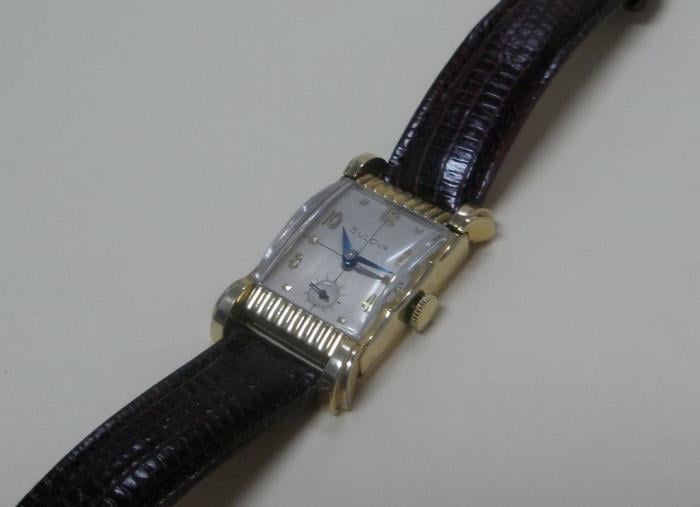
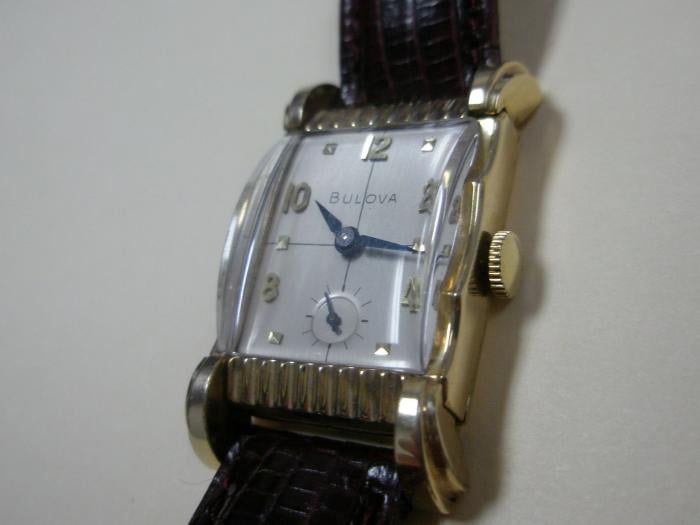
In reply to Hi all- First time poster so by John Munson
Hello John. I would recommend having a professional watch maker replace the crystal for you. There are so many variables in choosing the correct replacement that, without knowing the exact model it's difficult to be certain of the right crystal. Crystal replacement is not cost prohibitive and rather common.
In reply to Hello, I am trying to restore by MStorms2672
Every stem replacement should be custom fitted to every watch. There might be a guideline somewhere regarding the model of watch, but there are other factors involved.
Depending on the depth of the crown, the amount of crush on the threads, the compression of any gaskets involved, that sort of thing. Old crowns don't behave as new or NOS crowns, and old gaskets may be permanently flattened, or new materials may be slightly different. There are even variations from one supposedly identical case and crown to the next. The procedure is trim, check, trim, check, check again. The final step is the blue Loc-Tite on the threads and a specific amount of torque. I give a 24 hour cure time and final function check.
Additionally, there may be design and spec differences from one year or run to the next, and may include completely different thread pitch or crown height, etc. Hand fitting is the only way to ensure a correct fit for any watch.
In reply to Every stem replacement should by Reverend Rob
Thank you very much for the feedback! I'm a watch collector but really just started tinkering more and more with certain repairs. Most are very minor at this point.
I have a stem where the crown fits but it's long and I haven't had the time to check if it actually winds.
I'll check back soon!
In reply to Every stem replacement should by Reverend Rob
In watches like the older Bulovas, you remove a stem by backing the set screw out maybe one and a half turns, two max. To do any more risks unscrewing the the setting lever. Also, when replacing the stem, you sometimes have to apply small pressure on the screw downwards for the stem to go in because it is under a small spring pressure. Another risk here is the possibility that the yoke will jump out of the sliding pinion, and you have to now pull the hands and dial and re-establish the correct layout, usually entailing removing the Sautoir, or setting lever spring. Unscrewing the setting lever will also necessitate dial removeal to correct.
A bit of a pain.
So for the symptom you just mentioned, try your screwdriver in the screw and push in slightly, so the clearance is available for the stem to wiggle in, and you may have to turn the stem or jiggle it slightly to do this. If you suspect that the screw might be in too far, back it out a half turn and try again, but beware that taking it out too far may cause setting lever to let go, see above ^^.
The approved method says a half turn at a time, or if you are unsure, screw it all the way in and start over, unscrewing it one and a half or three half turns. Another annoyance is that these screws are often mauled due to many removals or incorrect fitting screwdrivers, and it may be difficult to turn the thing at all. If you have a local watchmaker, it is well worth taking it in and see if he will let you watch how it is done.
I should also mention that stems are not soft steel, they are hardened, and to cut them down you need cutters that will handle it. In addition, once the stem is cut, you shape the end on a stone to fit inside the crown with no burrs, and a slight domed shape. This is when you screw on the crown and check the fit. Each time, you either cut a bit more, stone a bit more and shape, and then check the fit.
So I did as you directed and it's not working. Unfortunately, I believe I have to bring to my local watchmaker. He does great work and he's reasonable.
Taking the hands off, removing the dial, etc. is above my skill level right now.
I appreciate all of the assistance.
I have another Bulova coming my way in the next week or so so I'll be back! Thank you!
Hello:
The Panel was kind enough to identify my pocket watch as a 1937 Tuxedo. It runs great the one time that I wound it. However, it has probably been sitting in a drawer for well over 60 years. Any suggestions about where to take it to have it cleaned and lubricated? I am giving it to my son and frankly I doubt he will ever wear it. If it is better off doing nothing with it, enjoying it as an heirloom, I understand, just please let me know.
If your son intends to run the watch at all, I strongly recommend taking it to a watchmaker for a full service, called a CTR in the trade. Running it while dried and/or dirty will cause accelerated wear and damage. Also, oiling a dirty watch should not be done. the dirt is now mobile in the jewels and will act as a fluid abrasive.
As to where, the NAWCC has listings online for watchmakers by location/region. If in doubt, call a local chapter directly. Oftentimes jewellers will have a dedicated watchmaker who does their trade work, but prices are higher becuase the jeweller is the middleman.
Struggeling to get oscolating weight to attach to the movement. The manual describes it as a pin and spring that retains it, It currently justfalls off. Well my Dual Wind watch showed up and after opening the back the weigth fell off and the watch stopped working at all. It had ran overnight with no problem. I inccluded a couple of pictures, On the weight Gear i can see a pin but it does not seem to move. Does anyone have any experience on how to get the weight to stay on. Thanks,
Steve
OK. I cant seem to get a picture to post. Im just learning.
In reply to Struggeling to get oscolating by Paducahman001
In reply to Struggeling to get oscolating by Paducahman001
Hi Steve - It's a little different than adding photos to watch records. Here's the intructions. For some resaon, photos from camera role on smart phones tend to rotate 90 degrees. I've found it's best to save from a computer.
Hard to say- as mentioned, we'd need to know the movt model or see a pic. If it's a Felsa, (like a 10AUC) it will have a small arrow engraved on the rotor to show the disassembly pin. You have to be careful with this sliding pin, it toggles back and forth like a switch, but you don't want to press down on it too hard. The other types do not have this type of attachment (non-Felsa), there will be a locking plate with screw that retains the rotor.
Hi, i'm new today.....My watch was identified by a very friendly gentleman and i would like to know if any watch repair near Virginia ?.....or anywhere for that matter...I don't mind sending it out....1940 Lone Eagle belonged to my dad...If anyone can help just let me know....Thanks for your time.
In reply to Hi, i'm new today.....My… by C.T.
I can restore your lone eagle.. send pics front and back and description of problems to [email protected]
I'll send back estimate
John V. / TIME & AGAIN
Specializing in Bulova and Accutron service and restorations
In reply to Hi, i'm new today.....My… by C.T.
Watch repair for your Vintage Bulova and specializing in Vintage Accutron...
Send pic front and back of watch and brief description of problems to: [email protected]
I'll send estimate for repairs.
John V. / Time & Again


